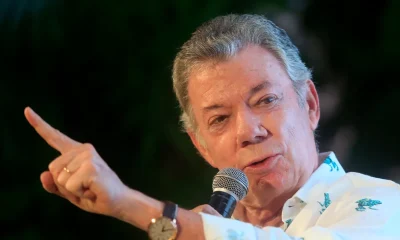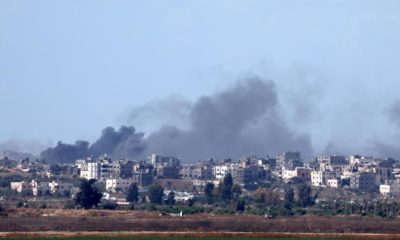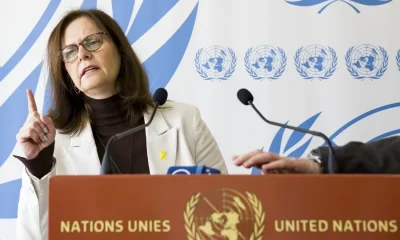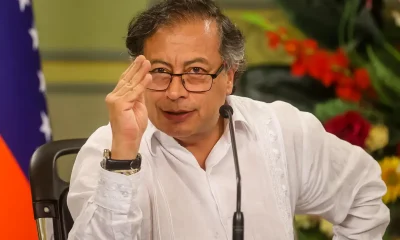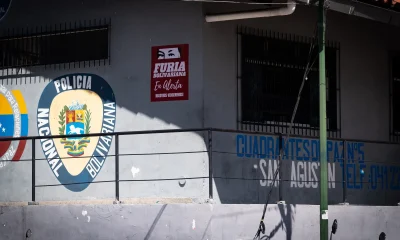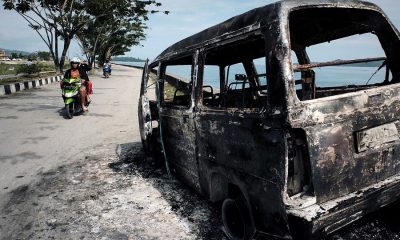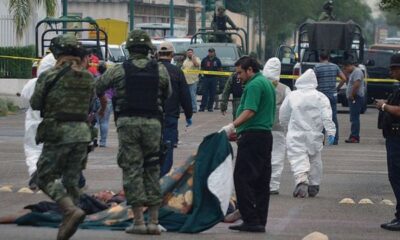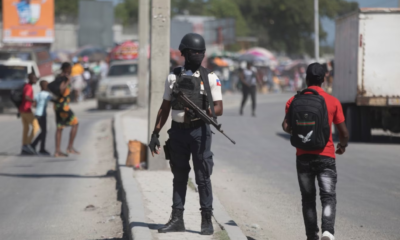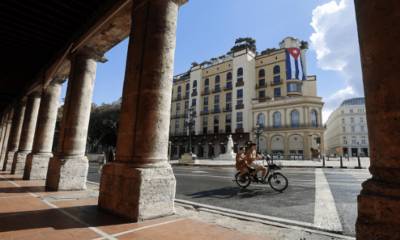International
The UN estimates the number of deaths in the Papua New Guinea avalanche at 670
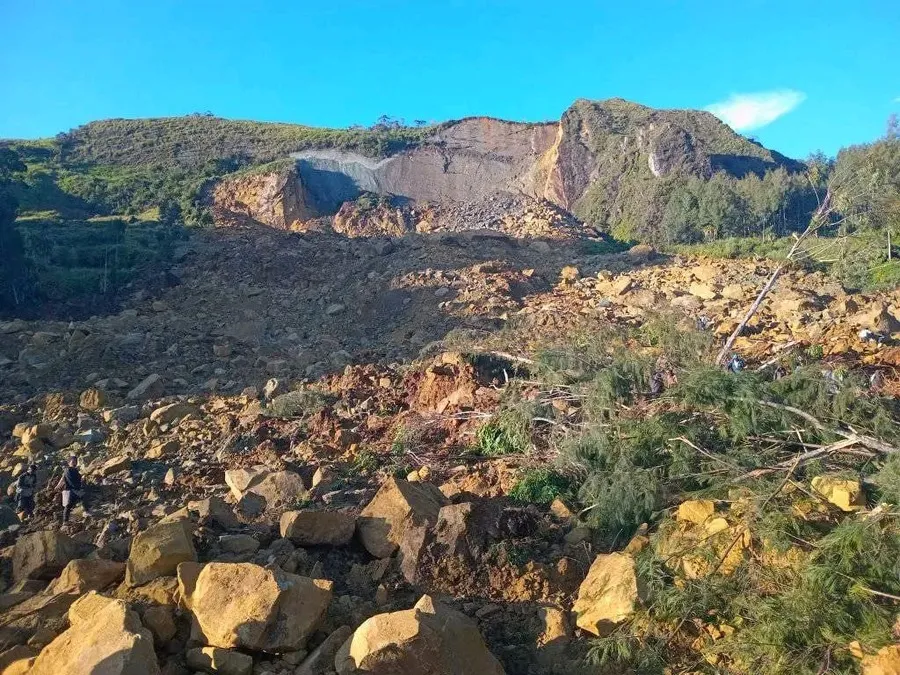
A United Nations agency estimated this Sunday that more than 670 people were killed in the avalanche of land that in the early hours of Friday buried a remote village north of Papua New Guinea.
The head of the International Organization for Migration (IOM) in Papua New Guinea, Serhan Aktoprak, told Australian state television, ABC, that according to the new estimates, more than 150 houses were buried by a layer of rocks and earth between six and eight meters deep and they fear that more than 670 people have lost their lives.
However, the United Nations delegation in Papua New Guinea clarified this Sunday to EFE by email that the number of deaths confirmed so far by the emergency response team is five, those whose bodies have been recovered in the village of Kaokalam, 600 kilometers from the country’s capital, Port Moresby.
“The team has informed us that it is difficult to confirm the actual number (of deaths) while search and rescue efforts continue,” said Kesang Phuntsho, head of the United Nations office in Papua New Guinea.
In addition to the five corpses recovered, the UN delegation indicated in a report this Sunday that there are an undetermined number of injured, “including 20 women and children.”
The official UN statement is also more cautious about the number of houses buried by the analch, which at the moment is between 50 and 60, in addition to a school, a church, orchards and vehicles.
The United Nations report indicates that the disaster area remains dangerous due to the risk of new avalanches, so they are working on the evacuation of the survivors, about 1,250, according to Aktoprak.
“My colleagues had to escape from the place because of the growing danger, since rocks continue to fall non-stop and the earth continues to slide,” said the head of IOM in the country.
He has also warned that the large amount of land fallen during the avalanche is putting pressure on the houses in the area, so evacuation is necessary.
About 4,000 people officially live in the area where the avalh occurred, although the authorities estimate that the number of people affected is higher, since the town in which it occurred is a place where locals fleeing conflicts and tribal clashes in nearby villages take refuge.
Much of the village of Kaokalam was buried by a layer of between six and eight meters of rocks and stones and the avalanche affected an area of more than 200 square kilometers, including about 150 kilometers of the main road of the province, which makes it difficult to rescue and help the survivors.
In addition, other sections of access to the village are cut off by previous landslides, so it is only possible to access by helicopter or in off-road vehicles.
Images from the site of the catastrophe shared on social networks show a vast area of rocks and land torn from a hill, as well as neighbors collecting their behods and exploring the area buried by the landslide in search of survivors.
The affected area usually suffers from heavy rains and floods, and the landslides are not unusual in the country, in which, despite the wealth in natural resources, a large part of its more than nine million inhabitants live in extreme poverty and is isolated due to a deficit in communications and infrastructure, especially in remote places such as the current catastrophe.
International
U.S. and Mexico Reach Deal to Address Water Deficit Under 1944 Treaty

The United States and Mexico have reached an agreement to comply with current water obligations affecting U.S. farmers and ranchers and for Mexico to cover its water deficit to Texas under the 1944 Water Treaty, the U.S. Department of Agriculture said in a statement.
The department уточified that the agreement applies to both the current cycle and the water deficit from the previous cycle.
On Monday, U.S. President Donald Trump accused Mexico of failing to comply with the water-sharing treaty between the two countries, which requires the United States to deliver 1.85 billion cubic meters of water from the Colorado River, while Mexico must supply 432 million cubic meters from the Rio Grande.
Mexico is behind on its commitments. According to Washington, the country has accumulated a deficit of more than one billion cubic meters of water over the past five years.
“This violation is severely harming our beautiful crops and our livestock in Texas,” Trump wrote on Monday.
The Department of Agriculture said on Friday that Mexico had agreed to supply 250 million cubic meters of water starting next week and to work toward closing the shortfall.
Agriculture Secretary Brooke Rollins, quoted in the statement, said Mexico delivered more water in a single year than it had over the previous four years combined.
Trump has said that if Mexico continues to fall short of its obligations, the United States reserves the right to impose 5% tariffs on imported Mexican products.
Mexico’s Deputy Foreign Minister for North America, Roberto Velasco, said that a severe drought in 2022 and 2023prevented the country from meeting its commitments.
International
Several people shot in attack on Brown University campus

Several people were shot on Saturday in an attack on the campus of Brown University, in the northeastern United States, local police reported.
“Shelter in place and avoid the area until further notice,” the Providence Police Department urged in a post on X. Brown University is located in Providence, the capital of the state of Rhode Island.
U.S. President Donald Trump said on his social media platform Truth Social that he had been briefed on the situation and that the FBI was on the scene.
At 5:52 p.m. local time (11:52 p.m. GMT), Brown University said the situation was still “ongoing” and instructed students to remain sheltered until further notice.
After initially stating that the suspect had been taken into custody, Trump later posted a second message clarifying that local police had walked back that information. “The suspect has NOT been apprehended,” the U.S. president said.
International
Colombia says it would not reject Maduro asylum request as regional tensions escalate

The Colombian government stated on Thursday that it would have no reason to reject a potential asylum request from Venezuelan President Nicolás Maduro should he leave office, as regional tensions persist over the deployment of U.S. military forces in the Caribbean since August.
“In the current climate of tension, negotiations are necessary, and if the United States demands a transition or political change, that is something to be assessed. If such a transition results in him (Maduro) needing to live elsewhere or seek protection, Colombia would have no reason to deny it,” said Colombian Foreign Minister Rosa Villavicencio in an interview with Caracol Radio.
However, Villavicencio noted that it is unlikely Maduro would choose Colombia as a refuge. “I believe he would opt for someplace more distant and calmer,” she added.
Colombian President Gustavo Petro also commented on Venezuela’s situation on Wednesday, arguing that the country needs a “democratic revolution” rather than “inefficient repression.” His remarks followed the recent detention and passport cancellation of Cardinal Baltazar Porras at the Caracas airport.
“The Maduro government must understand that responding to external aggression requires more than military preparations; it requires a democratic revolution. A country is defended with more democracy, not more inefficient repression,” Petro wrote on X (formerly Twitter), in a rare public criticism of the Venezuelan leader.
Petro also called for a general amnesty for political opponents and reiterated his call for forming a broad transitional government to address Venezuela’s prolonged crisis.
Since September, U.S. military forces have destroyed more than 20 vessels allegedly carrying drugs in Caribbean and Pacific waters near Venezuela and Colombia, resulting in over 80 deaths.
U.S. President Donald Trump has repeatedly warned that attacks “inside Venezuela” will begin “soon,” while Maduro has urged Venezuelans to prepare for what he describes as an impending external aggression.
-

 International5 days ago
International5 days agoMexico City prepares for 13 million pilgrims at Basilica of Guadalupe
-

 International4 days ago
International4 days agoWashington declares State of Emergency as atmospheric river brings severe flooding
-

 International4 days ago
International4 days agoU.S. to require five-year social media history from tourists under Visa Waiver Program
-

 Central America5 days ago
Central America5 days agoHonduras’ electoral chief reports ongoing technical issues but says results remain intact
-

 Central America5 days ago
Central America5 days agoU.S. accuses Ortega regime of systematic human rights abuses in Nicaragua
-

 Central America5 days ago
Central America5 days agoU.S. finds no evidence of fraud in Honduras election despite delays
-

 International3 days ago
International3 days agoCuba battles out-of-control dengue and chikungunya epidemic as death toll rises to 44
-

 Central America4 days ago
Central America4 days agoOAS and EU urge honduran political actors to respect vote results and avoid unrest
-

 Central America3 days ago
Central America3 days agoHonduras election crisis deepens as CNE president denounces intimidation attempts
-

 International3 days ago
International3 days agoColombia says it would not reject Maduro asylum request as regional tensions escalate
-

 International1 day ago
International1 day agoSeveral people shot in attack on Brown University campus
-

 International3 days ago
International3 days agoEcuador on track for record violence as homicides hit highest level in Latin America again
-

 International4 days ago
International4 days agoSix ecuadorian soldiers jailed pending trial for alleged extrajudicial execution
-

 International1 day ago
International1 day agoU.S. and Mexico Reach Deal to Address Water Deficit Under 1944 Treaty
-

 Central America1 hour ago
Central America1 hour agoPanama seizes over three tons of drugs hidden in Caribbean port container

























